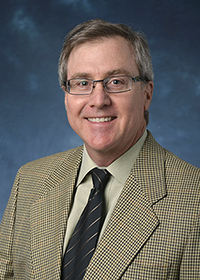February 4, 2014
CIRES' Cathy Smith and Christopher Williams win AMS awards
 This week Cathy Smith, a CIRES scientist working in NOAA's Earth System Research Laboratory, Physical Sciences Division (PSD), will receive a Special Award at the 94th Annual Meeting of the American Meteorological Society. Smith is being honored for “producing and sustaining an extremely user-friendly, web-based interface, making weather and climate data widely accessible to users at all levels.”
This week Cathy Smith, a CIRES scientist working in NOAA's Earth System Research Laboratory, Physical Sciences Division (PSD), will receive a Special Award at the 94th Annual Meeting of the American Meteorological Society. Smith is being honored for “producing and sustaining an extremely user-friendly, web-based interface, making weather and climate data widely accessible to users at all levels.”
Christopher Williams, also a CIRES scientist working in PSD, will receive an Editor’s Award from AMS, “for numerous, detailed, and thorough reviews of manuscripts on atmospheric and oceanic technology” for the Journal of Atmospheric and Oceanic Technology.
A web programmer with a background in atmospheric science, Smith leads PSD’s Web and Data Team. During her years at PSD and CIRES, she has been a strong advocate of providing researchers and the public with the data and tools needed to investigate climate and weather themselves. To this end, Smith has developed a number of online tools for accessing and analyzing the wide range of weather and climate data archived at PSD.
Data available from PSD’s website include information such as soil moisture, drought conditions, sea-surface temperature, precipitation, station data, and reanalysis products. Many of the datasets come in different formats, which are converted into a standard format called NetCDF. Visitors to the site can create and download maps and plots, calculate a variety of statistics, analyze data, or develop outlooks using forecasting tools from institutes around the world. Smith’s tools are used extensively by a number of scientific discussion groups online and in research settings to create real-time and archived plots of current and past weather and climate events in a convenient format. The software is also used as an integral part of atmospheric science courses at many universities.

Williams is a research scientist who uses his electrical engineering background to study atmospheric science problems. His contributions in analyzing radar observations to help understand the vertical structure of precipitating cloud systems have been widely recognized nationally and internationally. He has shared his expertise by co-teaching a radar course at the University of Colorado Boulder and by advising graduate students on Ph.D. dissertations. In the past two years, Williams has reviewed 10 Journal of Atmospheric and Oceanic Technology manuscripts, three other AMS journal manuscripts, six IEEE journal manuscripts, and five AGU journal manuscripts. Williams says he has taken to heart advice he received early in his career from his mentor: Since each manuscript needs three reviewers, a thoughtful and forward-giving scientist will review three times as many manuscripts as he or she submits for review (either as lead or as co-author).

